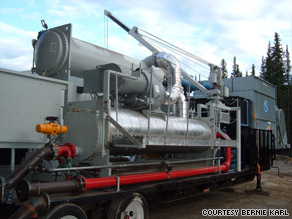 Bugging Out: Astronauts test a prototype of a six-legged lunar buggy
Bugging Out: Astronauts test a prototype of a six-legged lunar buggyat Moses Lake in Washington. NASA
From Popular Science:
What does it take to prep humans for a trip to an asteroid or a martian moon? Starvation? Isolation? Recycling feces for food? NASA's newest astronauts begin a grueling training regimen this fall to find out.
Three test pilots. Two flight surgeons. One molecular biologist. A flight controller, a Pentagon staffer and a CIA intelligence officer. These are the nine people chosen by NASA to be America’s next astronauts. Late this summer they reported to Houston along with two Japanese pilots, a Japanese doctor, a Canadian pilot and a Canadian physicist who will train alongside NASA’s class of 2009. Call them the lucky 14.
Read more ....

















